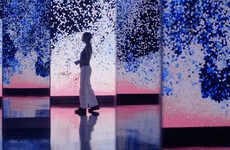The Federico Carbajal Anatomical Architecture series of sculptures features models of various parts of the human body. What makes it so special? Each sculpture is developed in detail using galvanized wire, stainless steel and acrylic. The style of design used by Federico Carbajal was entitled "spatial sketching."
Usually human anatomy sculptures are made using materials that are fragile, but the use of the various metals truly captures the sturdy nature of the actual human bone structure -- not to mention it adds a completely modernistic appeal to artist's work. The Federico Carbajal Anatomical Architecture collection was influenced by older works of Alexander Calder and contemporary 3D media techniques. The idea behind spatial sketching revolves around creating pieces in a different dimension, exploring the various aspects of 3D representation and volume. This is a truly inspiring collection by Federico Carbajal.
Wired Human Sculptures
Federico Carbajal Anatomical Architectures Turn Our Insides to Metal
Trend Themes
1. Anatomical Wire Sculptures - Disruptive innovation opportunity: Explore the use of unconventional materials like galvanized wire and stainless steel in traditional sculpture techniques.
2. Modernistic Art - Disruptive innovation opportunity: Combine classic art techniques with contemporary materials to create visually striking and unique artworks.
3. Spatial Sketching - Disruptive innovation opportunity: Experiment with creating art in different dimensions and exploring the possibilities of 3D representation and volume.
Industry Implications
1. Art and Sculpture - Disruptive innovation opportunity: Introduce new materials and techniques to traditional art forms, pushing boundaries and creating innovative works.
2. Interior Design - Disruptive innovation opportunity: Incorporate anatomically-inspired wire sculptures into interior spaces, blurring the line between art and decor.
3. Creative Education - Disruptive innovation opportunity: Integrate spatial sketching techniques into art education, encouraging students to think beyond traditional flat artwork and explore 3D representation.






